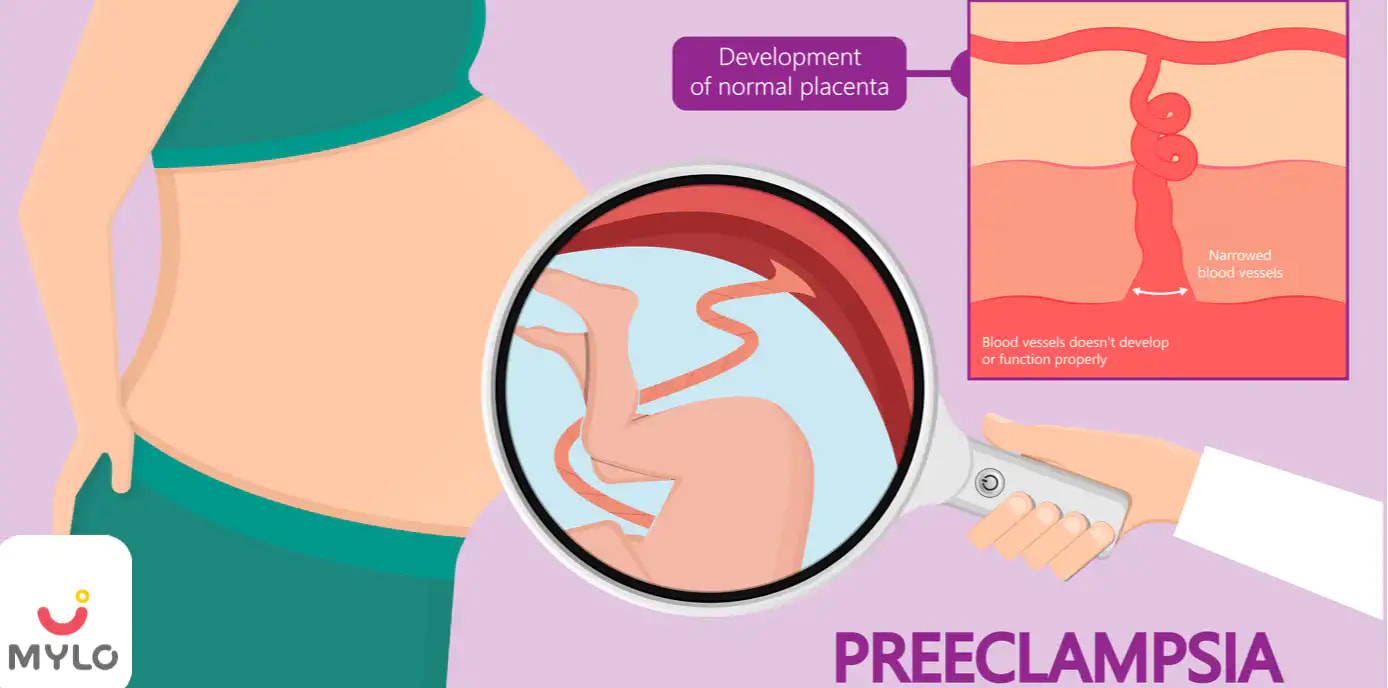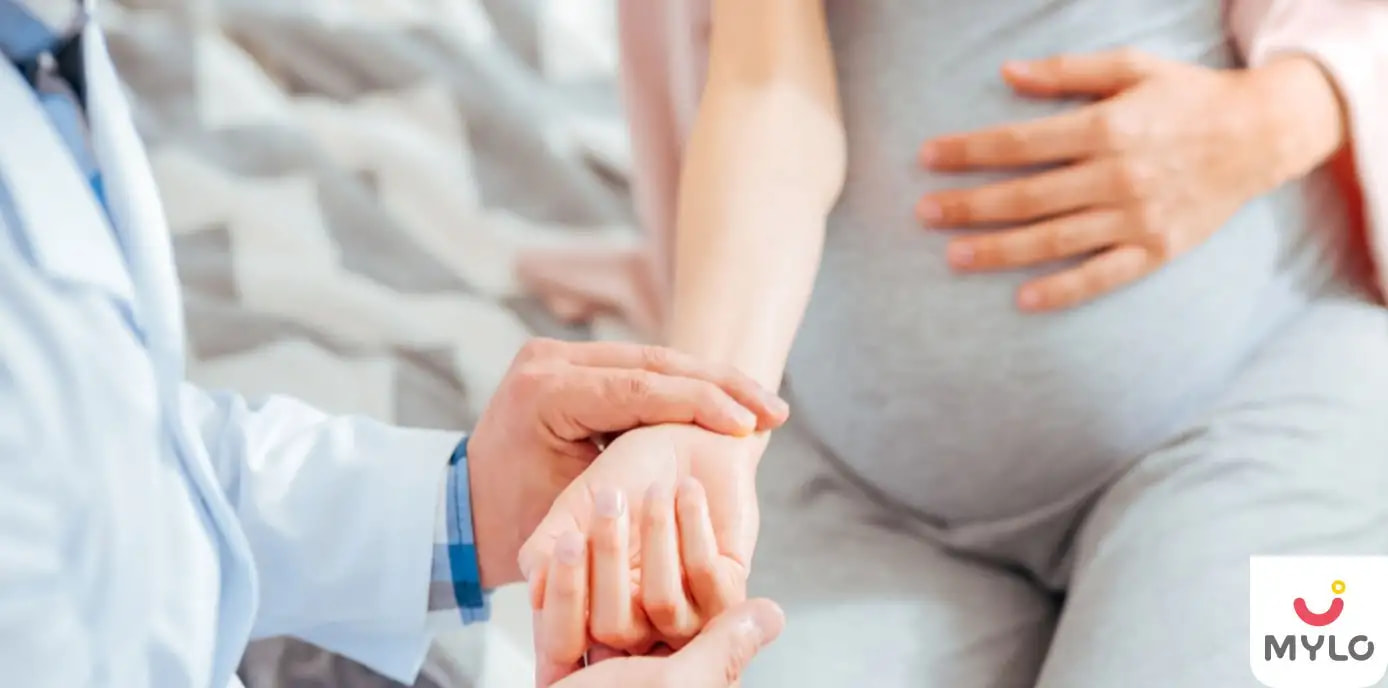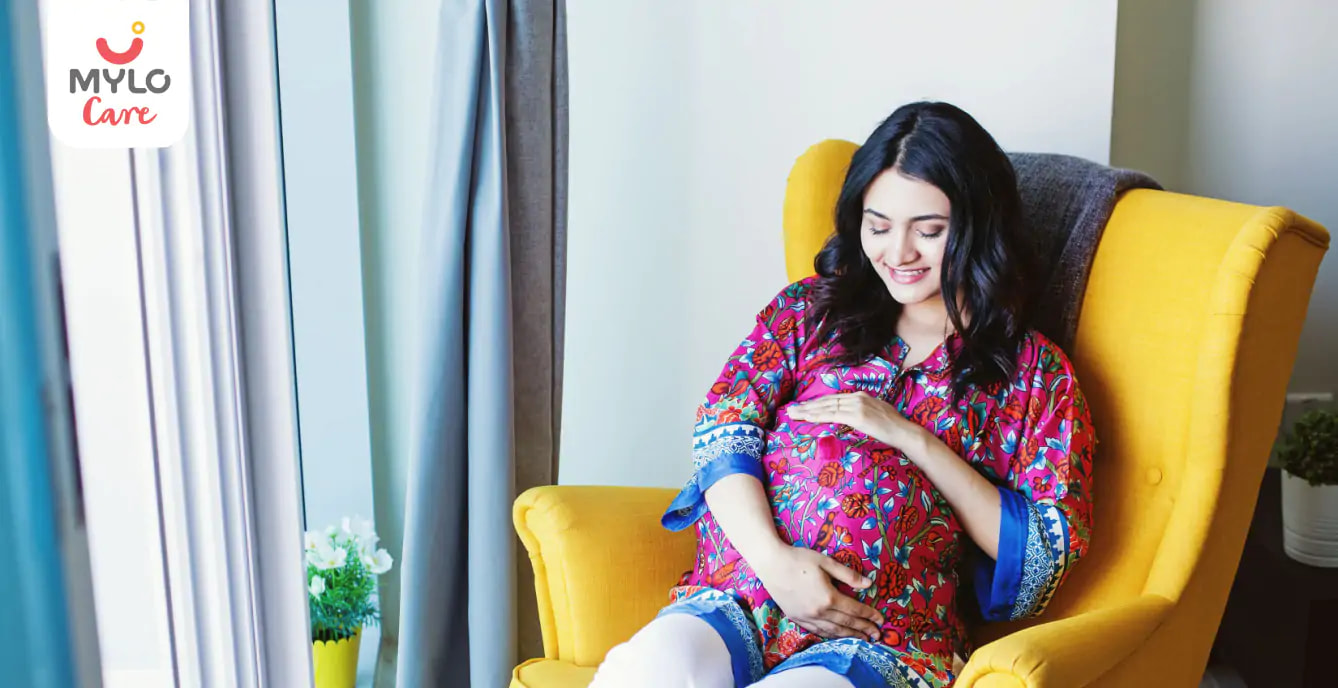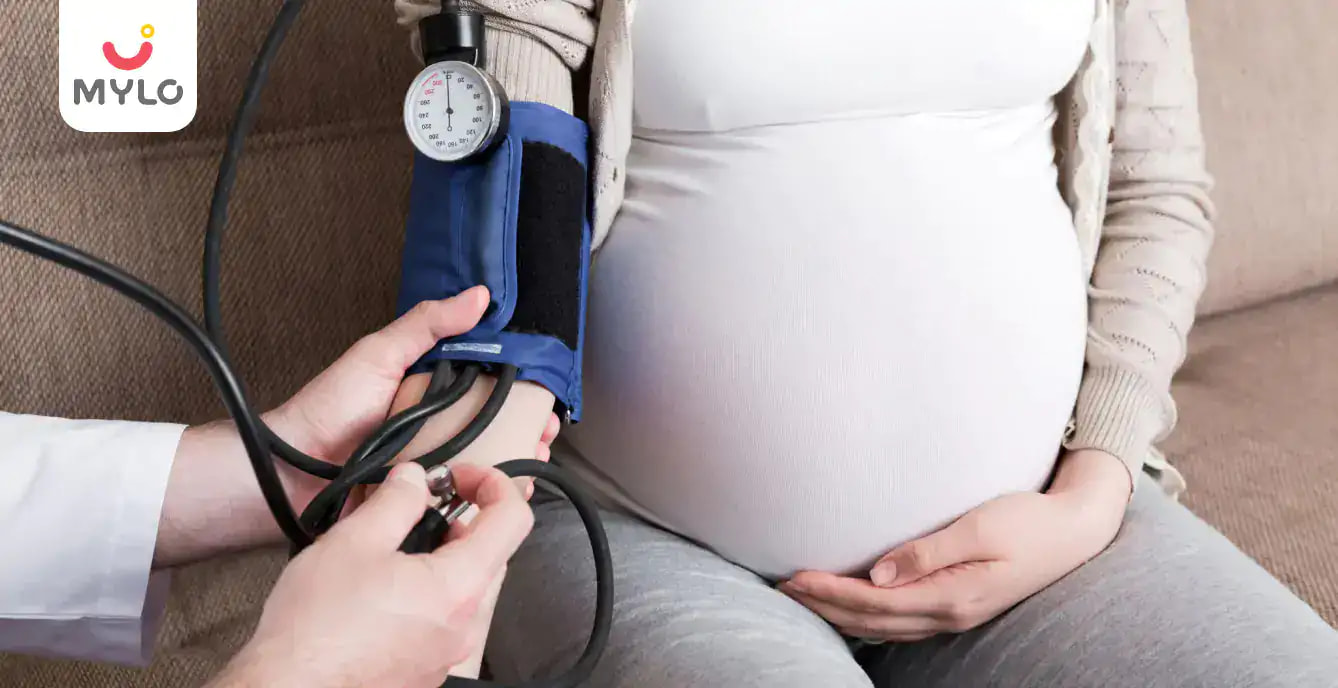Home

What is a High Risk Pregnancy: Causes, Types, Warning Signs & Management
In this Article

What is a High Risk Pregnancy: Causes, Types, Warning Signs & Management
Updated on 3 November 2023
High-risk pregnancy sounds scary, but a detailed understanding of its causes, warning signs, types, and effective management can help to tackle it.
People say pregnancy is the most beautiful phase in a woman's life. It not just brings about physical changes in a woman's body but is also said to cause emotional upheaval. The journey of 9 months is often marked by a multitude of challenges - be it physical or emotional. Some pregnancies are smooth and seem like a piece of cake, while some can be potentially risky.
What is a high-risk pregnancy?
A pregnancy characterised by potential danger to the mother, the unborn baby, or both is known as a high-risk pregnancy. This type of pregnancy requires medical supervision and monitoring throughout.
However, that does not imply that all high-risk pregnancies are prone to problems or post-birth complications for babies or mothers. High-risk pregnancy suggests that the expectant mother and the baby are at a higher risk due to complications, and pregnancy could be a bumpy ride.
People often ask if IVF pregnancies are high-risk. It sure does qualify as a high-risk pregnancy and requires close monitoring.
Causes of high-risk pregnancy
There are many causes of high-risk pregnancy, and it is vital to understand them. These include-
- The age of the expectant mother
- Existing health conditions
- Lifestyle factors like smoking, drinking, or substance abuse by an expectant mother
- Pregnancy-related complications
High-risk pregnancy age
Age is an essential factor in deciding whether pregnancy could be a high-risk one. Women who get pregnant for the first time after they turn 35 are more likely to be prone to high-risk pregnancies. According to high-risk pregnancy ICD 10, women within the age bracket of 12-55 fall in the high-risk pregnancy bracket and are likely to contract more complications.
Types of high-risk pregnancy
It is disturbing for an expectant woman to fall into a high-risk pregnancy, as it can be pretty challenging. It is essential to discuss the various risks associated with it to manage it better.
1. Placenta previa
It is a condition where the placenta is low-lying or covers the cervix. There are chances of excessive bleeding during labour, classifying this health condition as a high-risk one for pregnant women. There may be bleeding during the second or third trimester, and doctors monitor the pregnancy closely. Sometimes pregnant women are advised complete bed rest to minimise the risk.
2. Preterm labour
Under normal circumstances, a pregnant woman completes the 37 weeks gestation period and goes into labour anytime after that. The baby is said to be full-term if it is born after 37 weeks of gestation. But if the woman experiences contractions before the 37th week of the pregnancy, it is termed premature labour. It could be because of a family history of preterm labour, carrying twins, abnormalities of the cervix, or excessive stress. A prominent symptom of going into preterm labour is bloody or watery discharge and recurring pain in the abdominal area.
3. Gestational diabetes
Sometimes the expectant mother does not have diabetes before conceiving but contracts gestational diabetes because the pancreas cannot produce sufficient insulin to counteract the pregnancy-induced hormones, which leads to higher blood sugar levels. This condition often subsides after delivery. However, it is crucial to monitor the pregnancy throughout and watch out for symptoms like frequent urination, increased water intake, and blurred vision. It is advisable to increase the intake of fibre-rich and low-sugar diets.
4. Preeclampsia
Sometimes a pregnancy falls under the high-risk category when there is a high protein buildup in the urine and blood pressure is constantly on a higher side. Protein in urine could be dangerous as it may cause blood clotting or impact the liver and kidney of the expectant mother. It is advisable to seek a gynaecologist's advice and regularly monitor one's blood pressure levels.
Warning signs of high-risk pregnancy
Sometimes the high-risk pregnancy symptoms do not show right away but can be dangerous. It is vital to keep track of the bodily changes and baby movements.
A few of the common warning signs of high-risk pregnancy include:
- Recurring abdominal pain
- Fainting or passing out
- Lingering fatigue and breathlessness
- Unable to feel baby's movement
- Intermittent fever
- Palpitations, nausea, and headache that lasts beyond the first trimester
- Vaginal discharge or spotting
Management of high-risk pregnancy
First and foremost, do not PANIC!
A high-risk pregnancy does not mean a compulsive threat to the health of the mother and baby or that the baby will necessarily have congenital disabilities. However, after assessing a high-risk pregnancy, it does require regular medical check-ups, screenings for detection of any anomaly, close monitoring of symptoms, and most importantly, a healthy lifestyle and supportive family to relax the expectant mother.
However, the following measures will help in effectively managing a high-risk pregnancy:
- Regular tracking of blood sugar levels
- Regular tracking of blood pressure
- Apart from regular screenings, go for additional health screenings that may help detect any anomaly early on and can be managed.
- Maintaining a chart of the symptoms and informing the gynaecologist immediately in case of any unexpected deviation from normal.
- Giving complete rest to the body and mind and not taking on undue stress
- Regular monitoring of thyroid levels because gestational thyroid is pretty standard.
- Having a balanced and nutritious diet
- Maintaining a healthy weight is very critical to avoid further complications. Watch your diet and weight to ensure safe delivery.
- Full disclosure of health information to the gynaecologist to prevent any health risk
- High-risk pregnancy and exercise go hand in hand. Mild exercises help keep the body healthy and in movement. However, any activity should be done after the doctor's approval.
You can also adopt a healthier lifestyle during pregnancy with Mylo Pregnancy Care Routine which includes pregnancy yoga sessions, Garbha Sanskar sessions and consultation with gynecologists and health coaches. It can help you manage your weight trimester wise, reduce backache and leg swelling, boost energy levels and manage gestational diabetes and BP.
Conclusion
Pregnancy marks the onset of a new life, new hopes, and new beginnings for the would-be parents. A mother feels a whirlwind of emotions in this roller coaster journey of 9 months and prepares herself for the impending motherhood. At the same time, these 9 months can be challenging and pretty stressful for the mother if the pregnancy classifies as a high-risk pregnancy. As mentioned above, watching out for the symptoms, monitoring the daily activities, and managing the pregnancy with a gynaecologist's help can help overcome the challenges posed by a high-risk pregnancy.
However, the most important thing here is thinking positively and leading a stress-free life.
Happy motherhood, Mama!
References
- NICHD. (2018). High-Risk Pregnancy. www.nichd.nih.gov
- Rastogi, A. (2019). High-Risk Pregnancy. www.nhp.gov.in



Written by
Priyanka Verma
Priyanka is an experienced editor & content writer with great attention to detail. Mother to an 11-year-old, she's a ski
Read MoreGet baby's diet chart, and growth tips

Related Articles
Related Questions
Hello frnds..still no pain...doctor said head fix nhi hua hai..bt vagina me pain hai aur back pain bhi... anyone having same issues??

Kon kon c chije aisi hai jo pregnancy mei gas acidity jalan karti hain... Koi btayega plz bcz mujhe aksar khane ke baad hi samagh aata hai ki is chij se gas acidity jalan ho gyi hai. Please share your knowledge

I am 13 week pregnancy. Anyone having Storione-xt tablet. It better to have morning or night ???

Hlo to be moms....i hv a query...in my 9.5 wk i feel body joint pain like in ankle, knee, wrist, shoulder, toes....pain intensity is high...i cnt sleep....what should i do pls help....cn i cosult my doc.

Influenza and boostrix injection kisiko laga hai kya 8 month pregnancy me and q lagta hai ye plz reply me

RECENTLY PUBLISHED ARTICLES
our most recent articles

Diet & Nutrition
গর্ভাবস্থায় আলুবোখরা: উপকারিতা ও ঝুঁকি | Prunes During Pregnancy: Benefits & Risks in Bengali

Diet & Nutrition
গর্ভাবস্থায় হিং | ঝুঁকি, সুবিধা এবং অন্যান্য চিকিৎসা | Hing During Pregnancy | Risks, Benefits & Other Treatments in Bengali

Women Specific Issues
স্তনের উপর সাদা দাগ: লক্ষণ, কারণ এবং চিকিৎসা | White Spots on Nipple: Causes, Symptoms, and Treatments in Bengali

Diet & Nutrition
গর্ভাবস্থায় পোহা: উপকারিতা, ধরণ এবং রেসিপি | Poha During Pregnancy: Benefits, Types & Recipes in Bengali

Diet & Nutrition
গর্ভাবস্থায় মাছ: উপকারিতা এবং ঝুঁকি | Fish In Pregnancy: Benefits and Risks in Bengali

Diet & Nutrition
গর্ভাবস্থায় রেড ওয়াইন: পার্শ্ব প্রতিক্রিয়া এবং নির্দেশিকা | Red Wine During Pregnancy: Side Effects & Guidelines in Bengali
- ইনার থাই চ্যাফিং: কারণ, উপসর্গ এবং চিকিৎসা | Inner Thigh Chafing: Causes, Symptoms & Treatment in Bengali
- গর্ভাবস্থায় ব্রাউন রাইস: উপকারিতা ও সতর্কতা | Brown Rice During Pregnancy: Benefits & Precautions in Bengali
- Velamentous Cord Insertion - Precautions, Results & Safety
- Unlock the Secret to Flawless Skin: 7 Must-Have Qualities in a Face Serum
- Unlock the Secret to Radiant Skin: How Vitamin C Serum Can Transform Your Complexion
- Gender No Bar: 10 Reasons Why Everyone Needs a Body Lotion
- Unlock the Secret to Radiant Skin How to Choose the Perfect Body Lotion for Your Skin Type
- Top 10 Reasons to Apply a Body Lotion After Every Bath
- Communication in Toddlers: Milestones & Activities
- How to Improve Vocabulary for Toddlers?
- A Comprehensive Guide to Understanding Placenta Accreta
- Vulvovaginitis in Toddlers Causes, Symptoms and Treatment
- A Comprehensive Guide to Understanding Cerebral Palsy in Children
- Bitter Taste in Mouth During Pregnancy: Understanding the Causes and Remedies


AWARDS AND RECOGNITION

Mylo wins Forbes D2C Disruptor award

Mylo wins The Economic Times Promising Brands 2022
AS SEEN IN
















- Mylo Care: Effective and science-backed personal care and wellness solutions for a joyful you.
- Mylo Baby: Science-backed, gentle and effective personal care & hygiene range for your little one.
- Mylo Community: Trusted and empathetic community of 10mn+ parents and experts.
Product Categories
baby carrier | baby soap | baby wipes | stretch marks cream | baby cream | baby shampoo | baby massage oil | baby hair oil | stretch marks oil | baby body wash | baby powder | baby lotion | diaper rash cream | newborn diapers | teether | baby kajal | baby diapers | cloth diapers |








